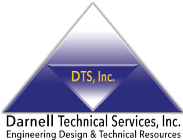Nowadays, the concept of smart homes has become quite popular, with plenty of companies developing many different gadgets, systems, and equipment designed to make our houses not only comfortable but remotely accessible. As a result, home automation design has grown to be a very fruitful market, with homeowners looking for smart and technological solutions to the problems of the 21st century. Therefore, architects and interior designers face new challenges, and these are some of the core elements they must keep in mind when working with home automation design.
One of the most important aspects of home automation that can help us achieve great levels of comfort and security at the same time is sensors. Depending on the circumstances and characteristics of a given home, different types of sensors might be required. For example, sensors that can detect different levels of light in the house might be needed if we want to have dimmers. Humidity sensors would be required to detect the levels of moisture on the environment and respond appropriately. Motion sensors are great for security systems, which have always been one of the biggest markets for home automation.
Whenever we are working on home automation design, we should always focus on the system architecture we will provide to our clients. For homeowners, it is essential that the system they control is user-friendly, effective, and complete. Therefore, we need to consider whether to add a central control unit or different individual control units throughout the house. Opting for one, however, doesn’t mean ruling out the other, as a room control unit can work along with a central unit, too.
Connectivity might be the key element of home automation, as, without it, no system, gadget, or device would really be able to work. Yet, there is more to this concept that goes beyond the idea of an internet connection. Even when not every device will need this feature, developing a system that properly notifies the user of any change and that is able to keep the inner systems connected to each other is crucial. Without this connection, home automation would be quite limited and perform poorly.
Last but not least, power usage and energy consumption are quite important elements of home automation. Developers and architects need to consider the amount of energy that these systems will consume, and make sure they provide effective yet sustainable or eco-friendly solutions. We also need to think about possible problems and design solutions for different scenarios, like power surges or fluctuations in voltage.








